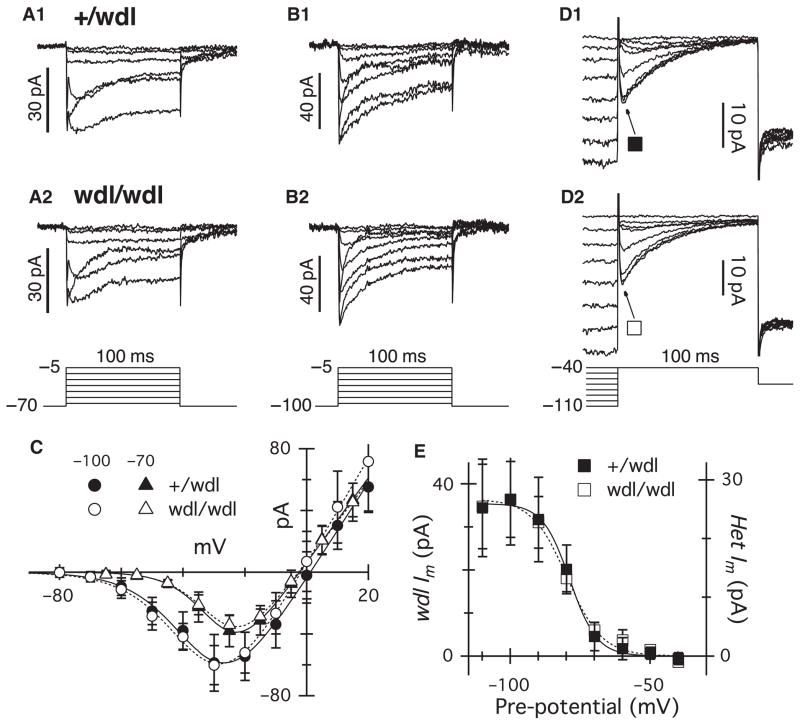Fig. 9.
Calcium currents are indistinguishable in wdl/wdl and wdl/+ mice. Leak subtracted currents recorded in RBCs from wdl/+ (A1, n = 11; B1, n = 8; D1, n = 7) and wdl/wdl mice (A2, n = 10; B2, n = 10; D2, n = 8) during 100-ms depolarizing voltage pulses. The pipette solution contained CsMeSO4 to block potassium currents. SR 95531 (10 μm), TPMPA (30 μm) and strychnine (1 μm) were added to the bath solution to block inhibitory currents. Depolarizing steps were applied in 10-mV increments from a holding potential of −70 mV (A) to activate mainly L-type calcium channels, or −100 mV (B) to activate both L- and T-type currents. (C) The amplitudes (± SEM) for average current–voltage relations from RBCs in the +/wdl (filled symbols) and wdl/wdl mouse (open symbols) were measured at a fixed time-point 10 ms after the onset of the voltage pulse. Triangles show currents measured from a holding potential of −70 mV, and circles show currents measured from a holding potential of −100 mV. (D) Steady-state inactivation of the transient component of the calcium current was generated by a 1-s pre-pulse to potentials between −110 and −40 mV. (E) The symbols show the difference between the current measured 8 ms after the onset of the test pulse to −40 mV, and 90 ms later, at the end of the test pulse. Data from the +/wdl and mutant animals have been scaled for comparison. The smooth lines show a fit to a Boltzmann function, with half-inactivation potentials of −79 and −80 mV for the +/wdl and mutant data, respectively. The slope factors were 4.9 and 6.3 mV.

